
Lancaster is a city in Lancashire, England and the main cultural hub, economic and commercial centre of City of Lancaster district. The city is on the River Lune directly inland from Morecambe Bay. Lancaster is the county town although Lancashire County Council has been based at County Hall in Preston since its formation in 1889.

The River Lune is a river 53 miles (85 km) in length in Cumbria and Lancashire, England.

Canning Dock on the River Mersey is part of the Port of Liverpool in Northern England. The dock is in the southern dock system, connected to Salthouse Dock to the south and with access to the river via the Canning Half Tide Dock to the west. The Canning Graving Docks are accessed from the dock.
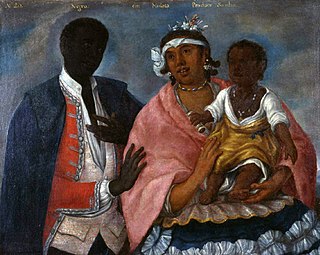
Sambo is a derogatory label for a person of African descent in the Spanish language. Historically, it is a name in American English derived from a Spanish term for a person of African and Native American ancestry. After the Civil War, during and after the Jim Crow era the term was used in conversation, print advertising and household items as a pejorative descriptor for black people. The term is now considered offensive in American and British English.
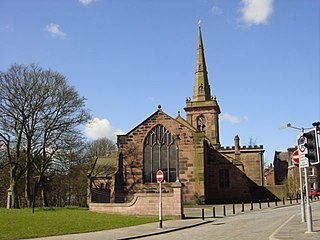
Prescot Parish Church, also known as St Mary's Church, is in the town of Prescot, Merseyside, England. It is recorded in the National Heritage List for England as a designated Grade I listed building, and is an active Anglican parish church.

Norse funerals, or the burial customs of Viking Age North Germanic Norsemen, are known both from archaeology and from historical accounts such as the Icelandic sagas and Old Norse poetry.
Sunderland, commonly known as Sunderland Point, is a small village among the marshes, on a windswept peninsula between the mouth of the River Lune and Morecambe Bay, in the City of Lancaster district of Lancashire, England. It was used as a port for slave ships and cotton ships but its importance declined as other ports such as Lancaster were opened up.

Edward Graham Paley, usually known as E. G. Paley, was an English architect who practised in Lancaster, Lancashire, in the second half of the 19th century. After leaving school in 1838, he went to Lancaster to become a pupil of Edmund Sharpe, and in 1845 he joined Sharpe as a partner. Sharpe retired from the practice in 1851, leaving Paley as the sole principal. In 1868, Hubert Austin joined him as a partner, and in 1886, Paley's son, Henry, also became a partner. This partnership continued until Paley's death in 1895.
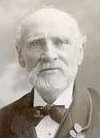
Henry Watts was a Sunderland sailor and diver, who rescued over 40 people from drowning during his lifetime – and assisted in the rescue of another 120 people.

St Margaret's Church is in Main Street, Hornby, Lancashire, England. The church is recorded in the National Heritage List for England as a designated Grade I listed building. It is an active Anglican parish church in the diocese of Blackburn, the archdeaconry of Lancaster and the deanery of Tunstall. Its benefice is combined with those of St Michael, Whittington, St John, Arkholme, and St John, Gressingham.
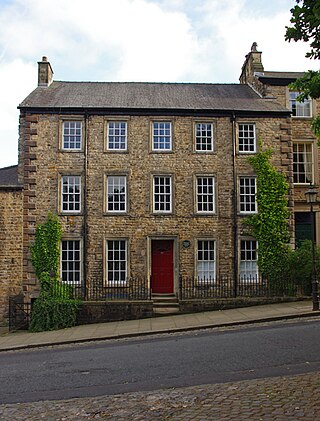
Sharpe, Paley and Austin are the surnames of architects who practised in Lancaster, Lancashire, England, between 1835 and 1946, working either alone or in partnership. The full names of the principals in their practice, which went under various names during its life, are Edmund Sharpe (1809–77); Edward Graham Paley (1823–95), who practised as E. G. Paley; Hubert James Austin (1841–1915); Henry Anderson Paley (1859–1946), son of Edward, usually known as Harry Paley; and, for a very brief period, Geoffrey Langshaw Austin (1884–1971), son of Hubert. The firm's commissions were mainly for buildings in Lancashire and what is now Cumbria, but also in Yorkshire, Cheshire, the West Midlands, North Wales, and Hertfordshire.

Glasson Dock, also known as Glasson, is a village in Lancashire, England, south of Lancaster at the mouth of the River Lune. In 2011, it had a population of around 600.
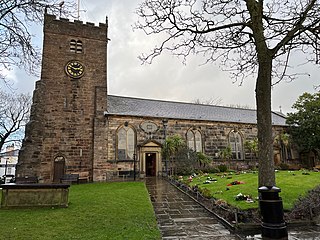
St Chad's Church is an Anglican church in Poulton-le-Fylde, Lancashire, England. It is an active parish church in the Diocese of Blackburn and the archdeaconry of Lancaster. It is recorded in the National Heritage List for England as a designated Grade II* listed building. A church on the site was built no later than the 11th century and may have existed prior to the Norman conquest of England. The tower dates from the 17th century, and much of the remainder of the building from a major renovation in the 18th century, although some of the fabric of the original structure remains. Further renovation and additions took place in the 19th, 20th and 21st centuries.

The British Muslim Heritage Centre, formerly the GMB National College, College Road, Whalley Range, Manchester, England, is an early Gothic Revival building. The centre was designated a Grade II* listed building on 3 October 1974.
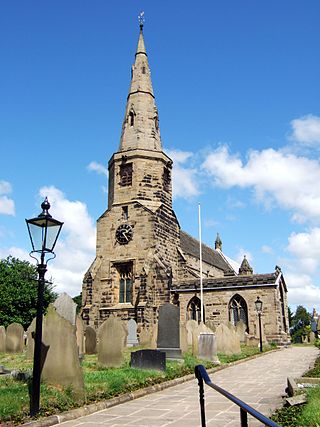
St Cuthbert's Church is an Anglican church in Halsall, a village in Lancashire, England. It is an active parish church in the Diocese of Liverpool and the archdeaconry of Warrington. The oldest parts of the church date from the 14th century and there have been several alterations and additions. It is recorded in the National Heritage List for England as a designated Grade I listed building.
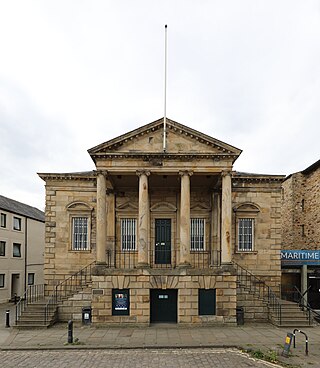
The Custom House is a grade II* listed building located on St Georges Quay, Lancaster, Lancashire, England. The architect was Richard Gillow of the Gillow furniture making family. Designed in 1764 for the Port Commissioners, it was used for its original purpose until 1882 when the Customs were transferred to Barrow-in-Furness.
Overton is a civil parish in Lancaster, Lancashire, England. It contains 29 buildings that are recorded in the National Heritage List for England as designated listed buildings. Of these, one is at Grade II*, the middle grade, and the others are at Grade II, the lowest grade.

The Bay Cycle Way is an 80-mile (130 km) cycling route around Morecambe Bay in Lancashire and Cumbria in north west England. Most of it forms National Cycle Route 700, while other sections are waymarked as NCN 6, NCN 69 and NCN 70.
Fame was launched in India in 1786. She was sold to Portuguese owners. A French privateer captured but the Royal Navy recaptured her in 1794. She then became a West Indiaman, sailing from Liverpool. Between 1796 and 1804 she made three voyages as a slave ship in the triangular trade in enslaved people. She then returned to the West Indies trade. From 1818 on she was a whaler in the Greenland whale fishery, sailing from Whitby and then Hull. She burnt in 1823 while outward bound on a whaling voyage.

George Case (1747–1836) was a British slave trader who was responsible for at least 109 slave voyages. Case was the co-owner of the slave ship Zong, whose crew perpetrated the Zong massacre. After the massacre, the ship owners went to court in an attempt to secure an insurance payout of £30 for each enslaved person murdered. A public outcry ensued and strengthened the abolition movement in the United Kingdom. In 1781, he became Mayor of Liverpool. After he died, the wealth generated by his slavery was bequeathed to the Case Fund by his grandson.





















